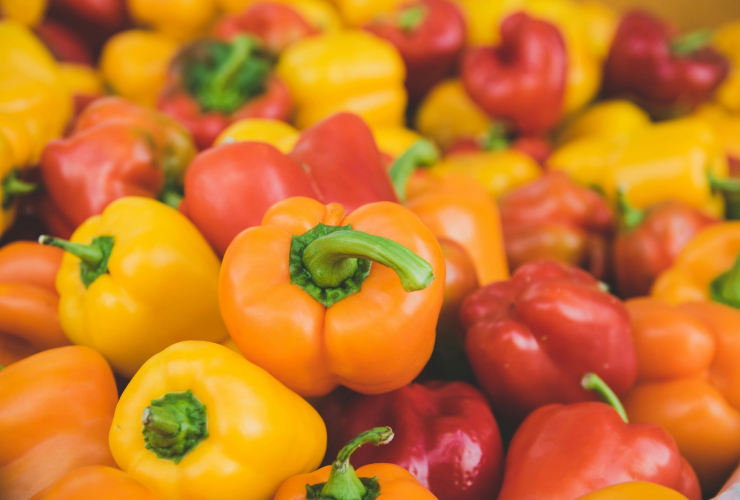This story was originally published by The Guardian and appears here as part of the Climatic desk collaboration.
Watermelon, green beans and bell peppers are among the many common fruits and vegetables found in U.S. supermarkets that contain potentially dangerous levels of pesticides, according to a study. analysis by Consumer Reports.
The new report, which analyzed seven years of U.S. Department of Agriculture data on commonly consumed fruits and vegetables, offers one of the most comprehensive assessments to date of pesticides found in American products. The data was based on nearly 30,000 samples of fruits and vegetables, including fresh, frozen, canned and organic, collected from supermarkets by the USDA as part of routine pesticide testing.
Consumer Reports built a huge database to analyze the data, and wrote down different foods provide practical recommendations to help consumers shop and eat with less risk.
Consumer Reports found that pesticide residues posed a significant risk in about 20 percent of the 59 common foods examined in their research. He food Those considered high risk included conventionally grown (non-organic) kale, blueberries, potatoes, and bell peppers. Apples, grapes, peaches, tomatoes, spinach and celery were among the products considered moderate risk.
Organic According to the research, fruits and vegetables generally had far fewer pesticide residues than conventionally grown foods. But even a few organic foods posed some risk. For example, imported green beans were high-risk and domestic potatoes were moderate, raising questions about how these organic crops were contaminated with high-risk pesticides not approved for organic farming.
In the study, imported conventionally grown products also posed greater risks than foods grown in the United States. Foods grown in Mexico, such as strawberries and green beans, were especially concerning. The Mexican strawberries contained oxydemeton-methyl, part of a group of pesticides called organophosphates that are neurotoxins. This category of insecticides can overstimulate the nervous system at high levels of exposure and disrupt the developing nervous system in infants and children.
For Consumer Reports consider a fruit or high-risk vegetables, only a relatively small proportion of samples had to be contaminated. The tests involved hundreds of samples of each food collected from American supermarkets over seven years. Only four percent of green bean samples tested had high-risk pesticide levels.
But some of the levels found in contaminated beans were alarming: A sample of green beans from 2022 had levels of methamidophos that were 100 times higher than the level. Consumer Reports‘Scientists consider it safe. Methamidophos has been banned in the United States and in green bean imports for more than a decade, raising questions about why it continues to appear in supermarket products.
Kale, watermelon and even some organic foods pose a high risk of pesticides, according to an analysis. #Pesticides #Fruits #Vegetables #Organics #Agriculture #Health
It’s important to put attention on Consumer Reports Scientists have stricter standards for what they consider safe than those of the Environmental Protection Agency, the U.S. government agency that sets the levels, known as tolerances. The Alliance for Food and Agriculture, an agricultural sector organization, notes that 99 percent of vegetables Tested by the USDA meets government safety standards for pesticide residues. But many scientists (including those behind the Consumer Reports study: They believe EPA tolerances are often set too high, putting consumers at risk.
“Many of these EPA tolerances are not consistent with the best science,” says Michael Hansen, senior scientist at Consumer Reports. “They were established several years ago and do not take into account situations where there are multiple pesticide residues in a single sample. The data is now available, and the computing power is there, to more accurately assess the real risk.”
The strongest evidence of the dangers posed by pesticides comes from farm workers and pesticide applicators, who are exposed to much higher levels of chemicals when they are applied to crops. Exposure to pesticides at work has been linked to an increased risk of Parkinson’s disease, several forms of cancer, diabetes and others health issues.
When it comes to consumers, the risks of eating foods contaminated by pesticides increase over time. For most of the population, a single serving of a contaminated fruit is unlikely to cause harm, but routine consumption of a contaminated fruit or vegetable for months or years magnifies the risk.
Children and pregnant women are particularly vulnerable because some pesticides can be endocrine disruptors, which can interfere with hormones responsible for the development of key body systems, especially the reproductive system.
Over the next year, The Guardian will be associated with Consumer Reports dig deeper into the findings of this study, seeking answers about how the US food supply became contaminated with pesticides and what we can do about it.

